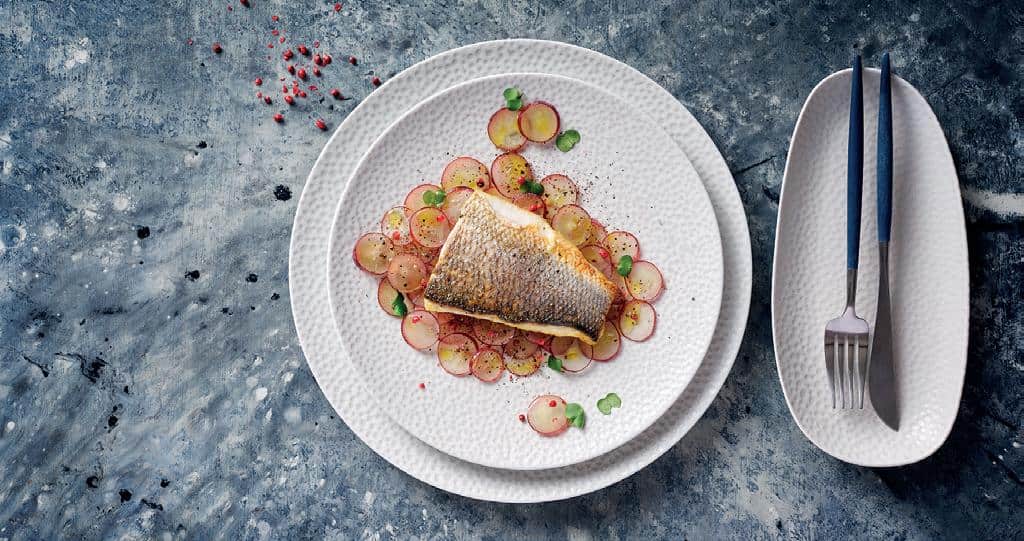Eating Cassasse reminds me of my grandma’s cooking. Her special recipe always brought our family together with its delicious smell and comforting taste. It’s like tasting a piece of my childhood whenever I have it.
Cassasse is a traditional dish made with cassava, black-eyed peas, coconut milk, and spices. It’s popular in Caribbean and West African cuisine and is known for its rich flavor and creamy texture.
Origin And History Of Cassasse – Different Flavors From Around The World!
Historical Significance:
Cassasse has been around for a long time in Mediterranean cooking. People have talked about it in old writings. It’s important because it shows how people have cooked in the Mediterranean for many years.
Cultural Significance:
Cassasse isn’t just about food; it’s a symbol of Mediterranean culture. It’s a big part of traditions and everyday life, showing how food is important to the culture and identity of the people there.
Role in Celebrations:
During weddings, religious events, and festivals, Cassasse is a big deal. It’s part of the meal and adds flavor and tradition to these special times, bringing people together.
Symbolism and Meaning:
Cassasse isn’t just about cooking; it represents the values of the Mediterranean region. It shows how people there rely on their land and community, passing down traditions and knowledge through the generations.
The Health Benefits of Cassasse – A Nutritious Choice!

Cassasse is considered a healthy food for humans for several reasons. Firstly, it is often made from natural ingredients such as herbs, spices, and grains, which are rich in essential nutrients like vitamins, minerals, and antioxidants.
Additionally, Cassasse is typically low in unhealthy fats and processed sugars, making it a nutritious choice for those looking to maintain a balanced diet. Its ingredients are often locally sourced, reducing the carbon footprint associated with food production and supporting sustainable farming practices.
Cassasse can also be a good source of dietary fiber, promoting digestive health and helping to regulate blood sugar levels. Moreover, the Mediterranean diet, of which Cassasse is a part, has been associated with various health benefits, including reduced risk of heart disease, stroke, and certain cancers.
Overall, incorporating Cassasse into one’s diet can contribute to overall health and well-being when consumed as part of a balanced and varied eating plan.
Read: What Companies Are In The Consumer Services Field – Your Comprehensive Guide!
Preparation Process – Step-by-Step Instructions!
Creating a delicious Cassasse involves a few simple steps. Here’s how to make it:
Ingredients:
- 2 cups peeled and diced cassava
- 1 cup black-eyed peas, soaked overnight
- 1 can (14 oz) coconut milk
- 1 large onion, diced
- 3 cloves garlic, minced
- 2 tbsp vegetable oil
- 4 cups vegetable broth
- 2-3 scotch bonnet peppers (optional, for heat)
- 1 tbsp thyme
- 2 bay leaves
- Salt and pepper to taste
Instructions:
1. Sauté Onions and Garlic: Heat vegetable oil in a large pot. Add diced onions and minced garlic. Cook until soft and fragrant.
2. Add Cassava and Black-eyed Peas: Stir in the cassava and black-eyed peas, making sure they are well coated with the onion and garlic mixture. This helps the flavors blend together nicely.
3. Add Broth and Simmer: Pour in vegetable broth. Bring to a boil, then simmer until cassava is tender (about 30-40 minutes).
4. Season and Serve: Season with thyme, bay leaves, salt, pepper, and scotch bonnet peppers if using. Adjust seasoning to taste. Serve hot and add fresh herbs on top if you like.
Ingredients and Variations – Enhancing Cassasse’s Flavor and Nutritional!

A. Core Ingredients:
Cassava:
Cassava serves as the foundational ingredient in Cassasse, providing a starchy base and a subtle sweetness to the dish. Rich in carbohydrates, cassava offers a significant source of energy, making it a staple food in many regions.
Read: Fintechzoom Mortgage Calculator – Mastering Your Mortgage!
Black-eyed peas:
Black-eyed peas contribute protein and fiber to Cassasse, enhancing its nutritional value and texture. These legumes are prized for their versatility and ability to add a hearty, satisfying element to the dish.
Coconut milk:
Coconut milk lends a creamy texture and a hint of sweetness to Cassasse, complementing the other flavors. It is a source of healthy fats and adds richness to the dish without the need for dairy products.
Onions and garlic:
Onions and garlic provide depth of flavor and aromatic complexity to Cassasse, enhancing its overall taste. They are also known for their potential health benefits, including immune-boosting properties and cardiovascular support.
Spices and herbs:
Spices and herbs, such as thyme, parsley, and chili peppers, add layers of flavor and aroma to Cassasse, creating a harmonious blend of tastes. Additionally, many spices and herbs boast antioxidant properties and may offer various health benefits when incorporated into the diet.
B. Country Variations:

Caribbean Islands:
In the Caribbean, Cassasse might include things like plantains or yams, and spicy peppers for a unique taste. They use spices like allspice and Scotch bonnet peppers to give it a special flavor.
West Africa:
In West Africa, Cassasse could have things like okra or spinach added in, and they might use palm oil instead of coconut milk. This gives it a different flavor that’s popular in that region.
Brazil:
In Brazil, they have a version called “acarajé,” which is made with black-eyed peas and fried in palm oil. It’s often served with shrimp or spicy sauces, making it a tasty street food.
Southeast Asia:
In Southeast Asia, they might add ingredients like lemongrass, galangal, and fish sauce for a tangy flavor. They also use toppings like fried shallots or peanuts to add crunch.
Read: Mary Marquardt – Profile Affair With Co-Star!
FAQs:
1. Can Cassasse be made vegetarian or vegan-friendly?
Yes, Cassasse is naturally vegetarian and can easily be made vegan by ensuring all ingredients, like vegetable broth and coconut milk, are plant-based. It’s a versatile dish that can be adapted to various dietary preferences.
2. How can I store leftover Cassasse?
Leftover Cassasse can be stored in an airtight container in the refrigerator for up to 3-4 days. To reheat, simply warm it on the stove over low heat, adding a bit of broth or water if it has thickened too much.
3. Is Cassasse suitable for people with dietary restrictions?
Cassasse is gluten-free and can be adapted to be dairy-free and vegan, making it suitable for a variety of dietary restrictions. Always check individual ingredients for allergens and adjust the recipe as needed.
Conclusion:
Cassasse is a flavorful and nutritious dish that combines diverse ingredients like cassava, black-eyed peas, and coconut milk. Its rich taste and cultural significance make it a beloved meal in many regions.
Enjoying Cassasse offers both a culinary delight and a connection to artistic traditions.





